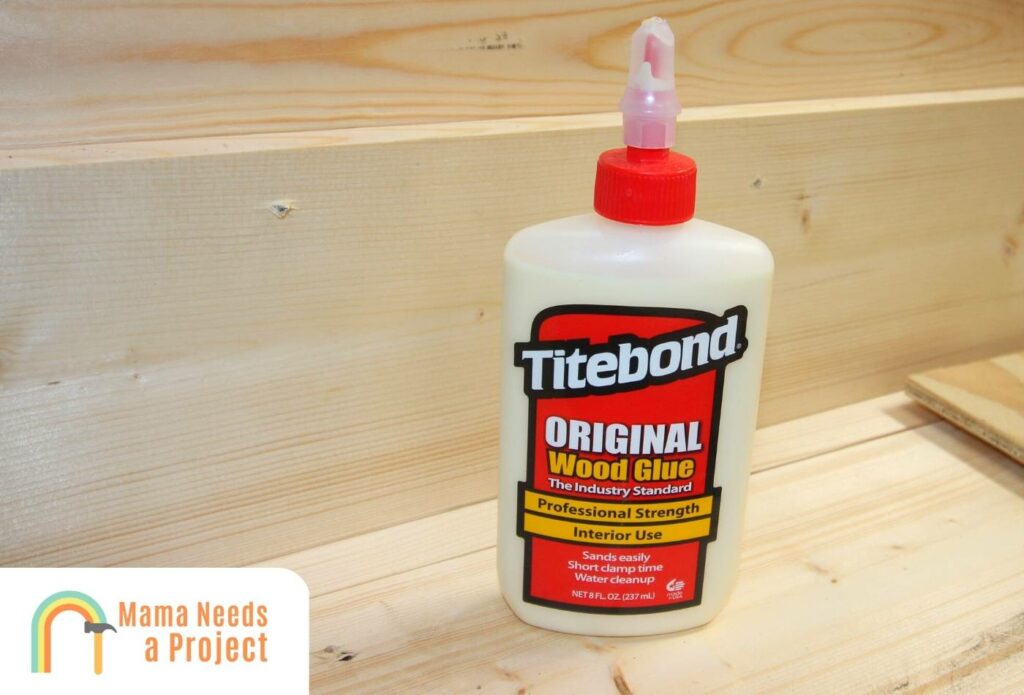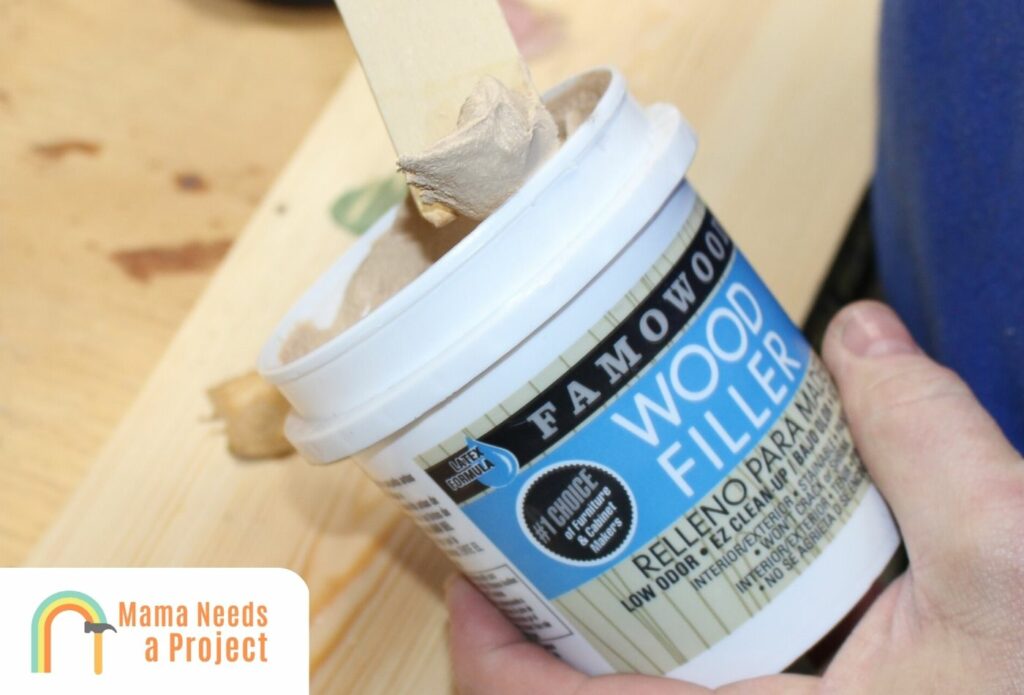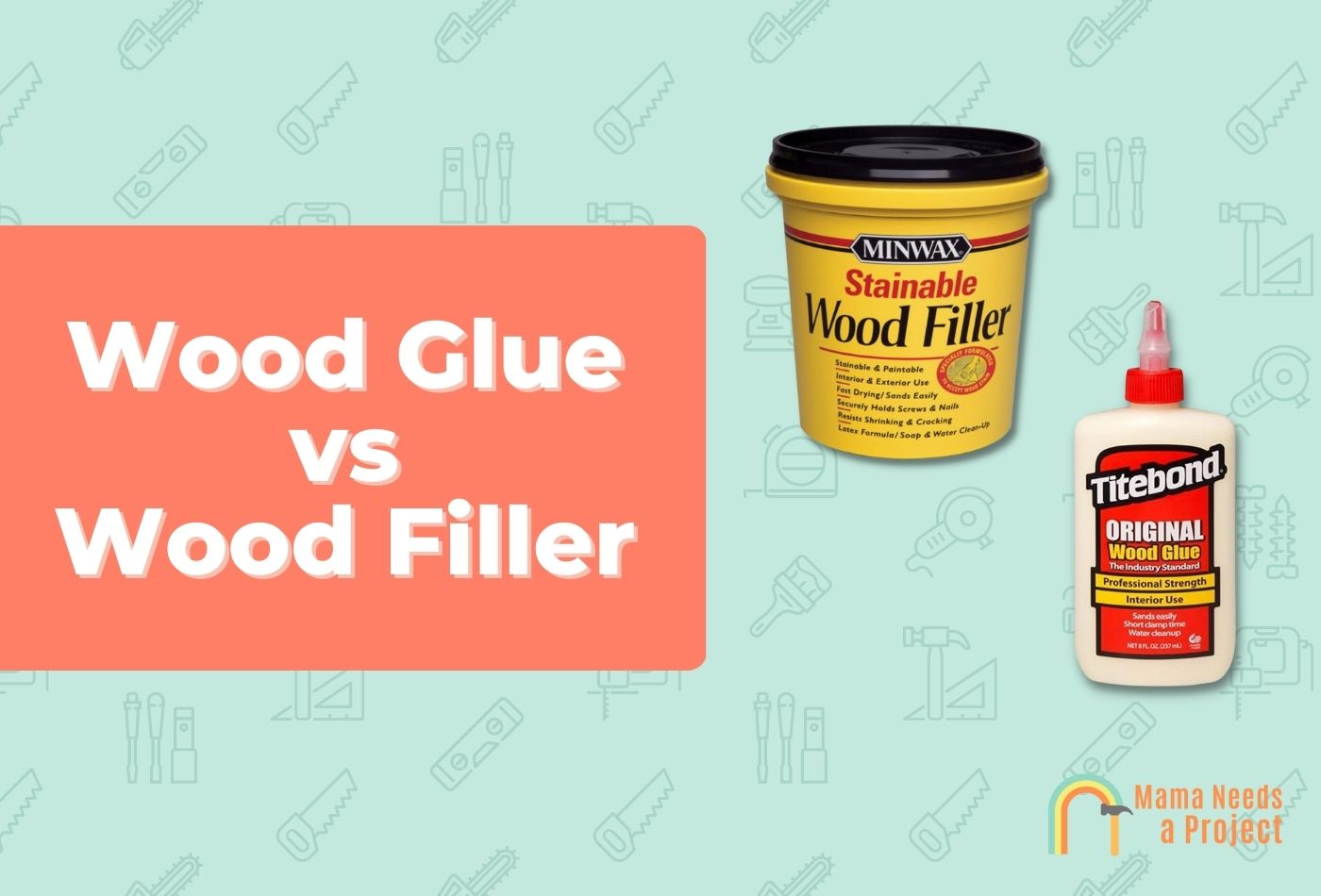Wood Glue vs Wood Filler: Which is Better? (Ultimate Guide)
Wood glue and wood filler are two of the most common products used when it comes to woodworking.
While one is more of an adhesive, the other is great for filling holes and gaps in your wood projects.
In this post, I’ll take a look at wood glue vs wood filler, which you should use when, and much more. Let’s dig in.
- Wood glue is better used to join wood together as an adhesive where wood filler is used to fill holes and gaps in wood.
- Wood glue is often more water and weather resistant than wood filler.
- The drying colors of wood glue are different than that of wood filler.
- Wood filler includes real wood fibers to provide strength and a natural finish.
What is Wood Glue

Wood glue is an excellent adhesive that’s used by woodworkers to join wood together.
Wood glue is manufactured using a variety of substances and synthetic resins that make it strong and durable.
It comes in the brand names of Elmer’s Carpenter’s Wood Glue, Gorilla Wood Glue, Titebond, and more.
There are several types of wood glues on the market, each with their own benefits and drawbacks. I’ll briefly cover each of them below.
- PVA glue – this is the most popular wood glue available. It boasts a strong mix of durability, water resistance, and overall strength. It comes in the brand names Elmer’s Wood Glue and Titebond. It’s also the least expensive type of glue you’ll find.
- Polyurethane glue – Polyurethane glues can be stronger than PVA glues and feature greater water resistance, but they aren’t as good at bonding wood. This type of glue comes in the brand name of Gorilla Glue.
- Cyanoacrylate glue – Also known as super glue or Crazy Glue, this is a strong glue that’s great at bonding other materials, but not the best for wood.
- Epoxy glue – one of the strongest glues on the market but much more expensive than others. Great for bonding materials that need the most strength.
- Hide glue – a more flexible that isn’t as strong or durable as traditional wood glues and should only be used in certain circumstances.
If you’re working on exterior projects like outdoor furniture, you can find wood glue that’s specifically made to deal with the elements like Titebond II or III or a polyurethane glue like Gorilla Glue.
The drying color of wood glue varies from glue to glue, so if any glue is exposed – you should wipe it away. Most wood glues will dry a slightly off white color, but some can dry darker.
Wood glue dries in as little as 24 hours for many glues, but some glues (like an epoxy glue) can take longer. Wood glue cures in around 24 to 72 hours in most cases.
When to Use Wood Glue
You should use wood glue to join wood together, whether it’s for woodworking projects, furniture building, or just projects around the home.
Wood glue is perfect for securing wood joints together, and it can be used in addition to screws and nails to bond wood together.
What is Wood Filler

Wood filler is, as the name suggests, used for filling wood. Whether you have large gaps, small nail holes, or other imperfections in your wood, you can use wood filler to cover them up so the wood looks pristine.
Wood filler is made with wood pulp, a binder, and several other substance that give it an appearance that’s extremely similar to natural wood.
Wood filler comes in the brand names Minwax, Elmer’s, DAP, and many others.
Most wood fillers contain real wood fibers or sawdust that can help you match the surrounding wood that you’re patching.
Additionally, wood filler can be sanded, stained, and painted – so you can get the exact appearance you’re looking for.
Wood filler can be harder than actual wood in some cases, making it a perfect long-term solution to repair imperfections from the day to day wear that wood can take.
Just like with wood glue, the drying time for wood filler will vary depending on the type and brand you have. In most cases, it will take under 24 hours for wood filler to dry.
It’s worth noting that wood filler is not the same as wood putty. While they are similar in some ways, there are some key differences. Check out my wood filler vs wood putty comparison for more info!
When to Use Wood Filler
Wood filler should be used to fill wood gaps and cracks in wood.
Here are a few examples of when to use wood filler:
- Fill screw holes
- Fill nail holes
- Filling gaps and cracks
Differences in Wood Glue vs Wood Filler
When it comes to the differences between wood glue and wood filler, there are a few things to keep in mind.
- Wood glue is designed as an adhesive. While wood filler can join pieces of wood, it’s not nearly as strong or as durable as a wood glue.
- Wood filler is more easily removed. While there are some ways to remove wood glue, it’s much more difficult than removing wood filler – which is something to consider depending on the project.
- Most wood glues are water resistant. Wood glue is more weather and water resistant than wood filler. Because wood glue dries hard, it become impermeable to water.
- Wood filler is more sandable and stainable so it’s easier to make wood filler look like natural wood.
- Both products can dry different colors. Some wood fillers come in a variety of color options to better match the wood around it. Most wood glues dry an off white color.
- Wood glue is better for outdoor use. Because it’s water resistant, wood glue is better suited for outdoor applications than traditional wood fillers. There are some wood fillers for decks and outdoor uses that can come in handy – but these are slightly different from others.
- Wood glue features more UV resistance than wood filler. Unless you specifically purchase a wood filler designed for exterior applications, wood glue is better suited to deal with the harsh UV rays from the sun.
Similarities Between Wood Glue and Wood Filler
Here are some of the similarities of wood glue and wood filler.
- Both are manufactured to work on wood. Both wood glue and wood filler are specifically manufactured to work with wood.
- Both can take similar amounts of time to dry and cure. Both wood filler and wood glue will take around 24 hours to dry and a few days to fully cure.
- Not great on other surfaces other than wood. While wood glue can be used on surfaces other than wood, it won’t be nearly as strong or durable and I would strongly recommend against it. Wood filler cannot be used on materials other than wood.
Doing some home improvement work? Check out my wood filler vs spackle comparison to know which you should use!
FAQs
Can wood glue be used as wood filler?
In some cases, you can make your own wood glue with wood shavings to use as wood filler, but it’s better to use a real wood filler to better match the surrounding wood. Additionally, because wood filler is better at matching the surrounding surface, it will provide a better appearance than wood glue.
Is wood glue or wood filler stronger?
Wood glue is stronger than wood filler. Because wood glue is meant to be an adhesive, it is much stronger than wood filler.
Does wood glue stick to wood filler?
Yes, wood glue can stick to wood filler once it has dried and cured. Just be sure to let the filler completely dry before trying to add wood glue to it.
Final Thoughts
Wood glue and wood filler are both tremendous products that are essential in my woodshop. I use them both pretty regularly, but there are some key differences.
Wood glue is primarily used to join two pieces of wood together by creating a strong bond between them. Wood filler is used to fill gaps and cracks in wood so that it matches the wood around it.
Both products are an essential in my book so I’d get them both to have handy!

